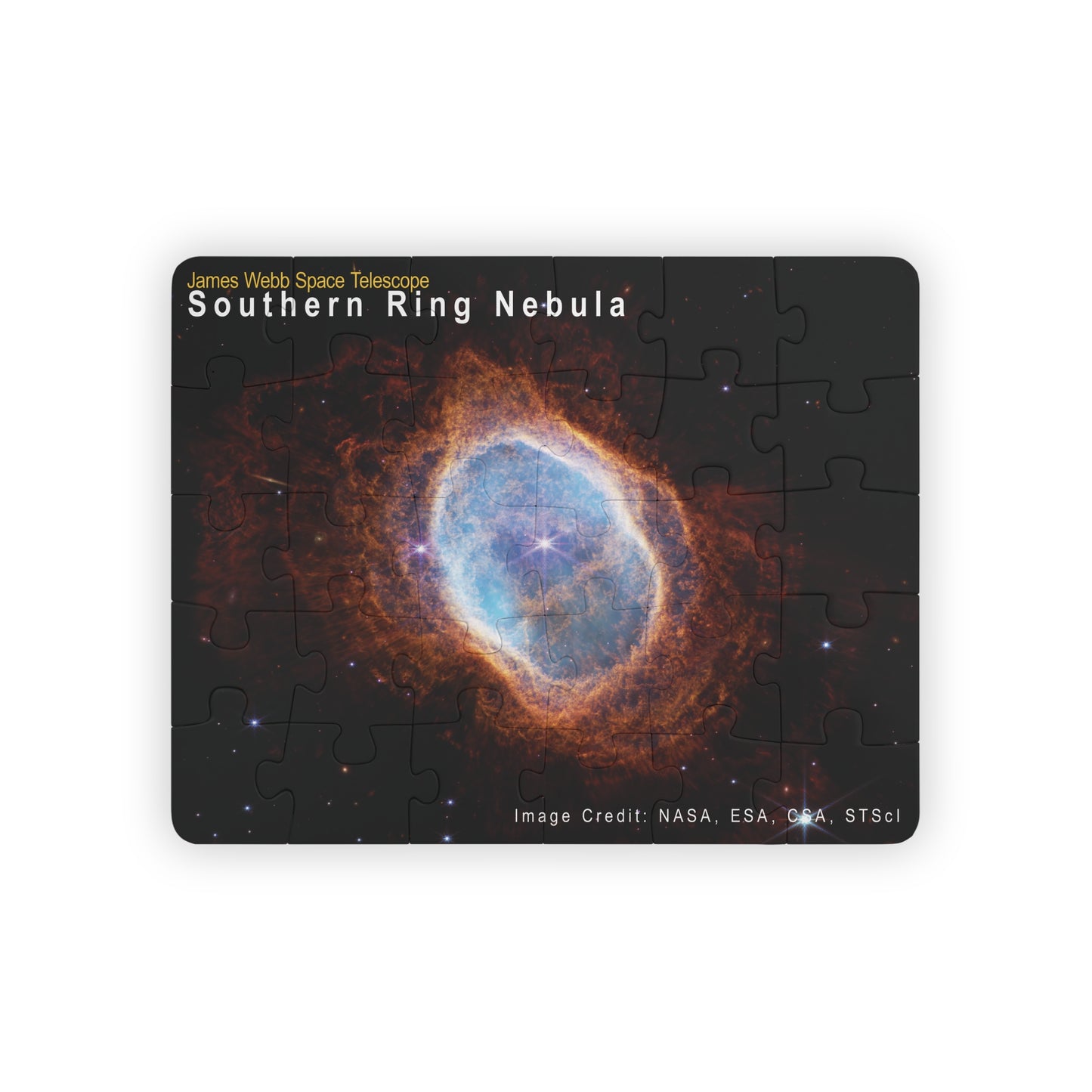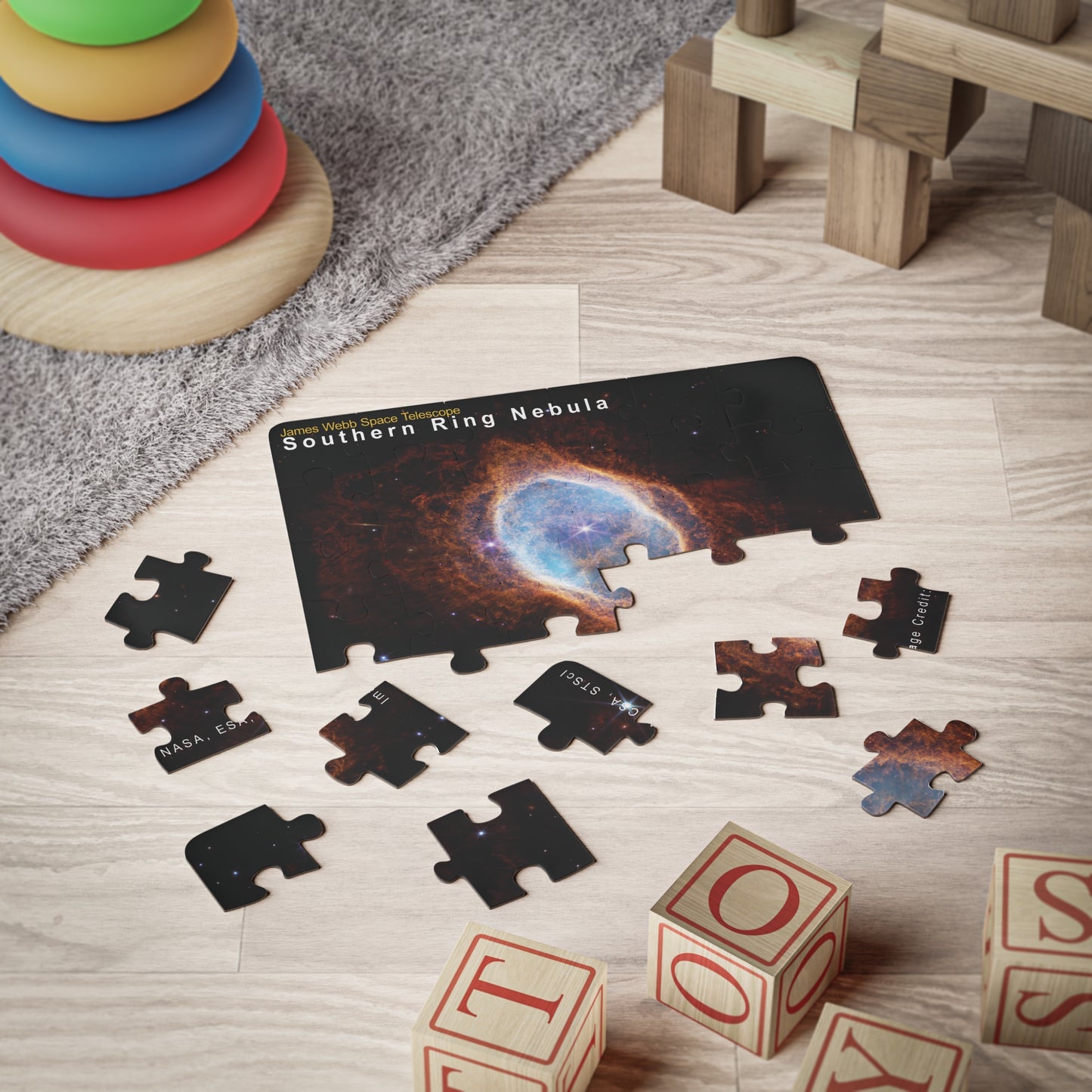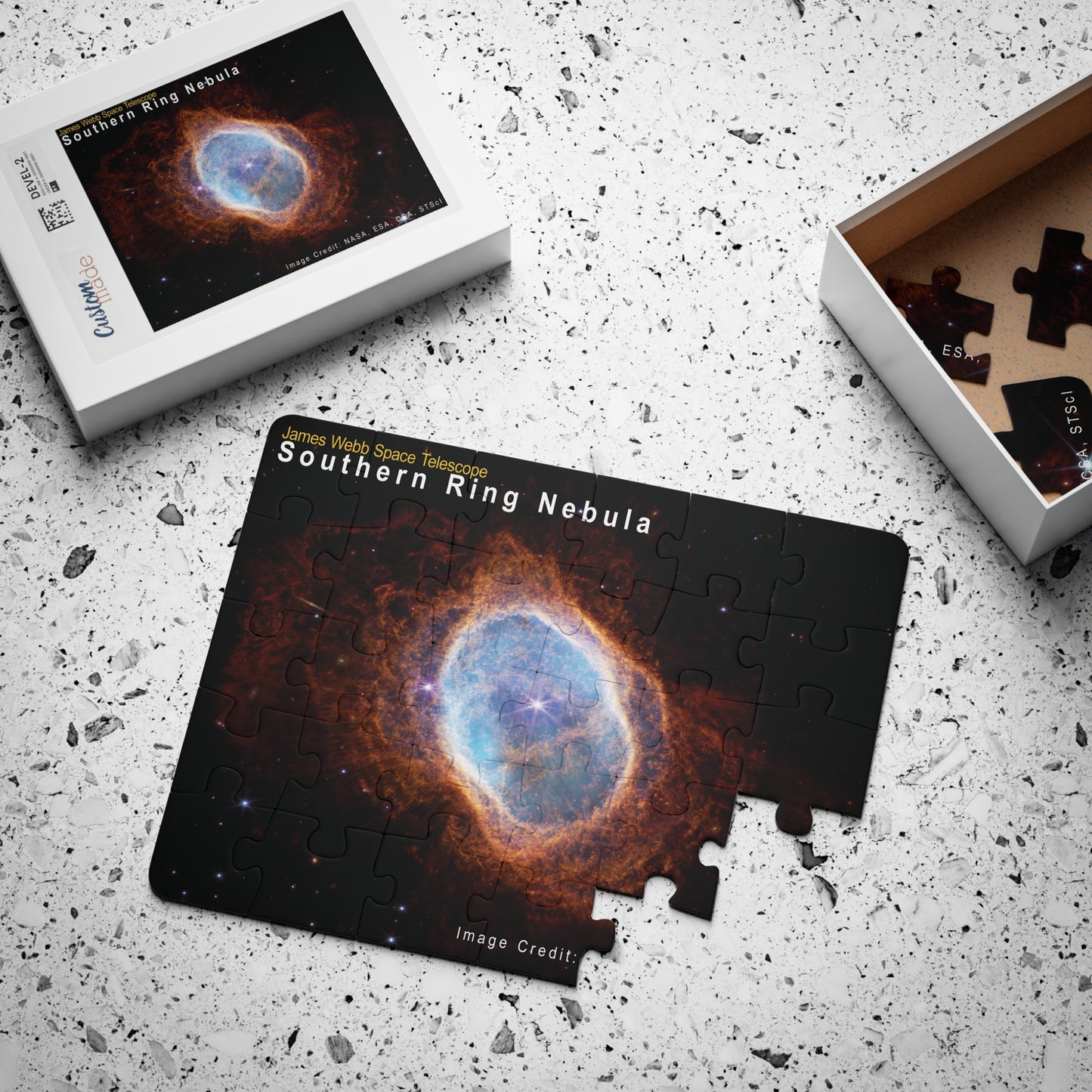Southern Ring Nebula, Kids' Puzzle
Southern Ring Nebula, Kids' Puzzle
Couldn't load pickup availability
Blast off into learning and fun with our Galaxy Puzzles!
Puzzles are an all-time favorite activity, and with your custom ideas, you can help youngsters have quality time by solving their own personalized kids' puzzle. Each puzzle is available in a toddler-friendly 30-piece pack featuring large pieces and rounded corners for added safety and peace of mind for parents. Each puzzle is made from chipboard and includes a reference photo to aid in solving the problem.
Material: laminated chipboard
One size: 30-piece puzzle - 14" x 11" (35.6 x 28cm)
Rounded corners
Comes in a box with a reference photo
Southern Ring Nebula:
NASA’s Webb Telescope has revealed the cloak of dust around the second star, shown at left in red, at the center of the Southern Ring Nebula for the first time. It is a hot, dense white dwarf star.
As it transformed into a white dwarf, the star periodically ejected mass – the shells of material you see here. As if on repeat, it contracted, heated up – and then, unable to push out more material, pulsated.
At this stage, it should have shed its last layers. So why is the red star still cloaked in dust? Was material transferred from its companion? Researchers will begin to pursue answers soon.
The bluer star at right in this image has also shaped the scene. It helps stir up the ejected material. The disk around the stars is also wobbling, shooting out spirals of gas and dust over long periods of time. This scene is like witnessing a rotating sprinkler that’s finished shooting out material in all directions over thousands of years.
Webb captured this scene in mid-infrared light – most of which can only be observed from space. Mid-infrared light helps researchers detect objects enshrouded in dust, like the red star.
This Mid-Infrared Instrument (MIRI) image also offers an incredible amount of detail, including a cache of distant galaxies in the background. Most of the multi-colored points of light are galaxies, not stars. Tiny triangles mark the circular edges of stars, including a blue one within the nebula’s red bottom-most edges, while galaxies look like misshapen circles, straight lines, and spirals.
Constellation: Vela
Dimensions: Image is about 2.4 arcmin across (1.4 light-years)
Distance: 2,000 light-years (590 parsecs)
Exposure Dates: 12 June 2022
Image Credit: NASA, ESA, CSA, STScI
Share






